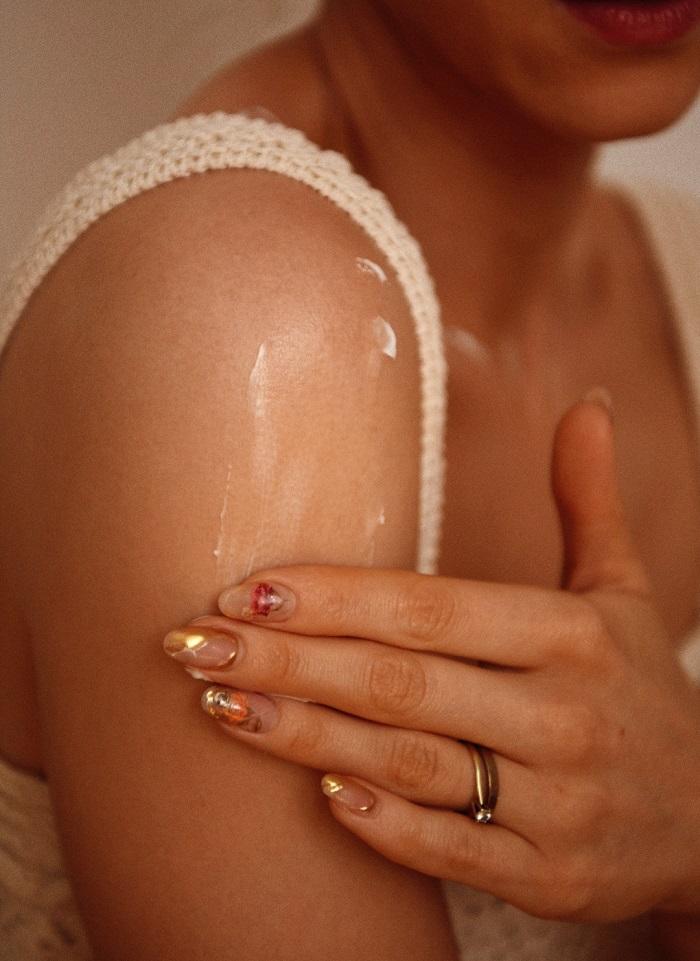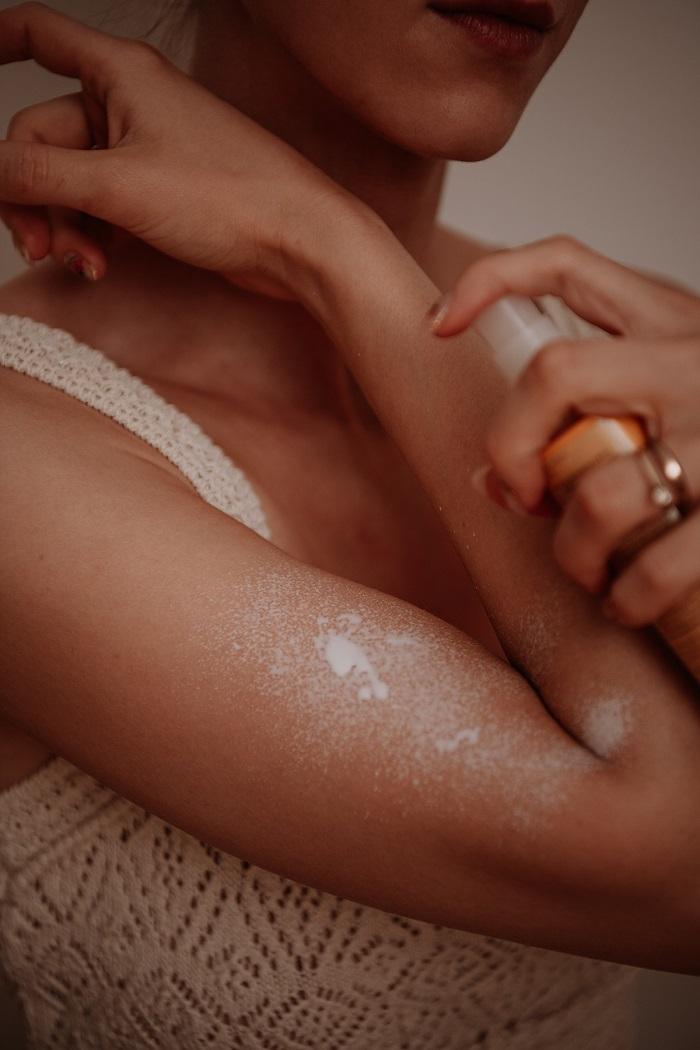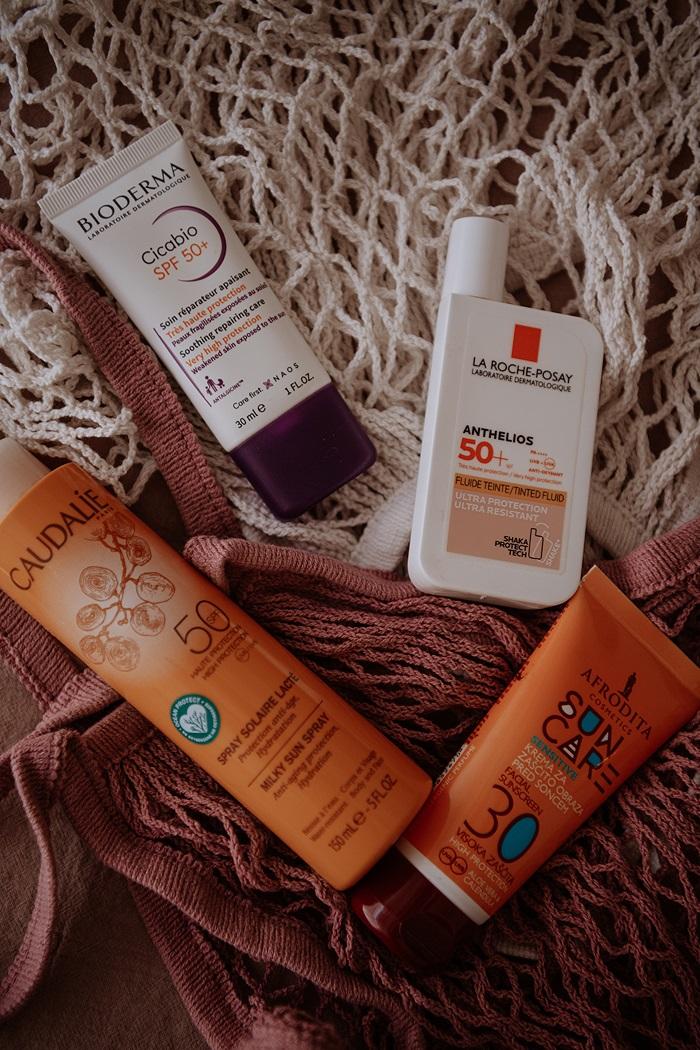Everyone’s aware of the importance of wearing sunscreen whilst you’re outside, basking in the warm rays, but what about when you’re taking some time to cool off in the shade? Do you still need to re-apply then? If you’re wondering about wearing sunscreen in the shade, here’s the answer.
How does sunscreen protect you from the Sun?
Before you can find out about whether or not your need to be wearing a sunscreen whilst you’re in the shade, it’s important to know and understand exactly what the purpose of sunscreen is, and how it works. There can be many misconceptions about sun protection and starting from the basics can give you a solid foundation to build from, enabling you to understand how you should be using the product on a day-to-day basis.

As you have likely heard before, through the media, or even branded on your sunscreen bottle, the Sun emits a certain type of wave known as UV rays, two types of which make their way through the Earth’s atmosphere, which are recognised as UVA and UVB. Although they’re both UV rays, they act slightly differently to each other and can produce different consequences for your skin, but they are both damaging, nevertheless.
| Shade Condition | Sun Protection Required |
|---|---|
| Fully shaded area | Minimal sun exposure; sunscreen not necessary |
| Partial shade | Some sun exposure; limited sunscreen use |
| Intense or direct sun | Significant sun exposure; use sunscreen |
Once either type of UV rays reaches your skin’s surface, it penetrates through the layers of cells and the initial reaction from your body is the production of melanin. This is a pigment which is found naturally in your skin, and comes from small structures below the skin’s surface, known as melanocytes, and causes a suntan. The melanin is a defence from the body against sun damage, as the suntan it produces increases your skin’s natural SPF just a little, which increases your resistance to the Sun’s rays ever so slightly.
However, after prolonged exposure, more damage can occur inside the skin and there can be a number of results which appear both immediately as well as in the future, making unprotected Sun exposure dangerous.

Sunscreen is a powerful, effective product which protects your skin in one of two ways: either by creating a physical barrier on the surface of your skin which reflects the UV rays away from you (a mineral sunscreen), or by absorbing the UV rays once they’ve penetrated your skin, preventing them from being able to cause any damage (a chemical sunscreen).
No matter which sunscreen you choose, it will essentially prevent the UV rays from causing any damage in some way, and this leaves your skin healthier, and at a much lower risk of encountering concerns and problems in the future.
| Factor | Description |
|---|---|
| Time of day | Sun’s intensity varies throughout the day, with midday hours (10 am to 4 pm) posing the highest risk of sunburn, even in shaded areas. |
| Shade type and coverage | Dense shade, such as under a tree or umbrella, provides better protection compared to light shade or a loosely woven fabric canopy. |
| Sun’s angle | The angle of the sun changes with seasons, affecting the amount of UV radiation reaching shaded areas. |
| Reflective surfaces nearby | Surrounding surfaces like water, sand, or concrete can reflect sunlight and increase UV exposure even in shaded areas. |
| Altitude | Higher altitudes expose you to increased UV radiation, even in shaded areas. |
| Geographic location | Locations closer to the equator receive more intense sunlight, leading to higher UV exposure in shaded areas. |
| Personal sensitivity | Individuals with fair skin, history of sunburns, or photosensitivity may be more prone to sun damage, even in the shade. |
| Clothing and accessories | Wearing protective clothing, hats, and sunglasses can enhance sun protection in shaded areas by reducing direct and indirect sun exposure. |
Do you need sunscreen in the shade?
It’s easy to see why sunscreen is so important whilst your outside, especially when there are so many concerns and complications that can arise in the future if you don’t use it. But, in most cases, no one spends their entire days out in the Sun, exposed to direct sunlight, especially not in the heat of the day, as it an get unbearably hot. Do you still need to be wearing your sunscreen in the shade?
The truth is that, while the shade may seem like a safe spot outside of the Sun, there’s no guarantee that you’re completely protected, and it does depend on what your ‘shade’ is. This is because, while you’re most probably out of direct sunlight, indirect sunlight can still be a sneaky way that the Sun’s rays catch you whilst you’re not expecting it.

Many people completely overlook the use of sunscreen when inside a building, too. It’s not just underneath a beach umbrella that you can find shade during the heat of the day and sitting inside your house or a café (or any other building or shelter) is just the same. Any windows or other sources of natural light should ring an alarm bell in your head to remind you of indirect sunlight, as this is a common way for people to suffer from sunburn without realising it.
In addition, if you fall asleep in the shade, underneath something small like a beach parasol, you should definitely be aware that the Sun does, in fact, move around the sky during the day, so what’s in the shade now may not be in the next 2-3 hours. So, it’s always a good idea to put on sunscreen as, even if you think you are out of even indirect sunlight for the minute, you may not be after a while, and you don’t want to suffer a nasty sunburn.
Cars are another example of an opportunity for indirect sunlight, and they actually allow a lot of light in, no matter where you sit or if you have tinted windows, as much of the car at eye level is made of glass. You can suffer a sunburn, even by sitting in your car, so be mindful of this and always bring some sunscreen on your road trips!
Also read: Should I Wear Sunscreen Every Day? (Advantages and Disadvantages)
How do you apply sunscreen properly?
Applying sunscreen properly and effectively is also very important, in addition to applying it in the correct situations, as wearing incorrectly applied sunscreen can result in it losing it effectiveness, and not providing enough protection or strength against the Sun’s UV rays.
There are lots of things to keep in mind, and here are some of the main tips for applying sunscreen properly:
- Use the correct SPF: SPF determines how much UVB protection a sunscreen provides, and you’ll need at least SPF 30 or 50 for guaranteed safe protection, especially in the heat of the summer.
- SUPERIOR ENDURANCE VS. SWEAT & WATER — From family fun to hardcore competition, Banana Boat Sport Sunscreen provides strong sun protection that stays on so you can play on
- CLINICALLY PROVEN UVA/UVB PROTECTION — This SPF 30 broad spectrum sunscreen spray protects skin from the sun's harmful UV rays
- HAWAIIAN TROPIC SUNSCREEN LOTION SPF 30 with an Ultra Radiance formula that leaves skin luminous
- OIL-FREE SUNSCREEN LOTION WITH A NON-GREASY LOOK AND FEEL — contains vitamins C & E to condition skin
If you click Buy on Amazon and make a purchase, I'll earn a small commission at no additional cost to you.
- Apply a generous amount: in total, you should be using the equivalent of a shot glass full of sunscreen in order to cover your face and body, and this will ensure you’ve given yourself a thick enough coating for a safe protection.
- Wait 20 minutes: if you’re using a chemical sunscreen (one which doesn’t function solely on minerals such as zinc oxide or titanium dioxide), you’ll need to wait for 20 minutes in order to allow the ingredients to absorb into your skin before going out into the Sun.
- Rub it in: wearing your sunscreen slathered in white patches across your face is not only unpleasant to look at, but it’s also ineffective, and can even result in sunburn, as the product needs to be properly dispersed throughout your face and body.
- Remember difficult places: small areas such as the tops of the ears and the feet are often forgotten, but they’re still likely to suffer sunburn, so don’t forget to cover all bases before venturing outside.
Final thoughts
Overall, your safest choice to make when questioning whether or not you need to be wearing sunscreen in the shade is to use it anyway. This doesn’t just go for the shade, but the same applies for pretty much any other situation when you’re not sure about the necessity for your sunscreen – it will never do any damage to wear it, and it can protect you, even when you may not think you need it.



